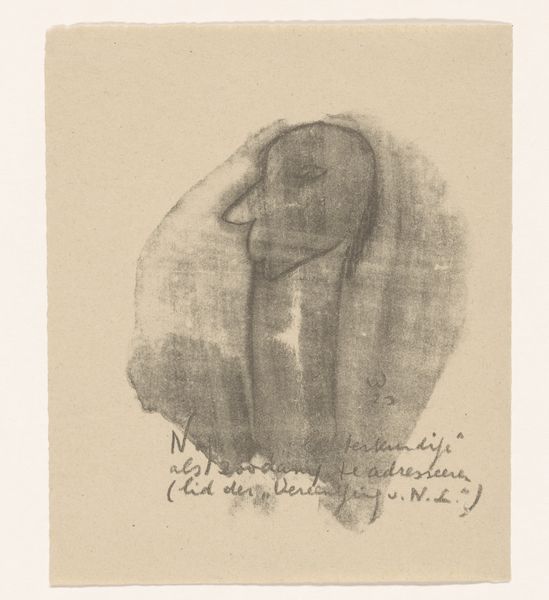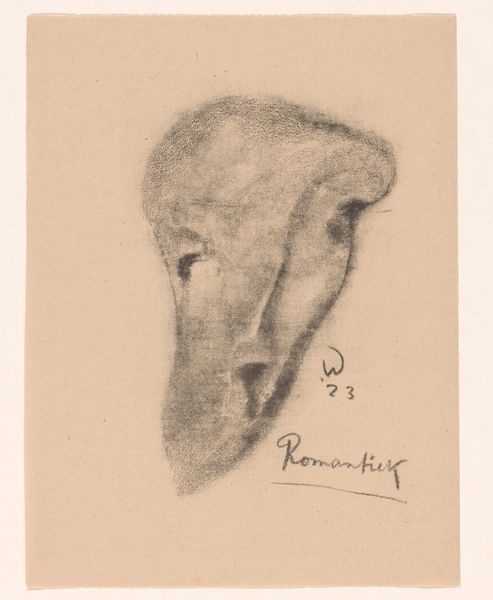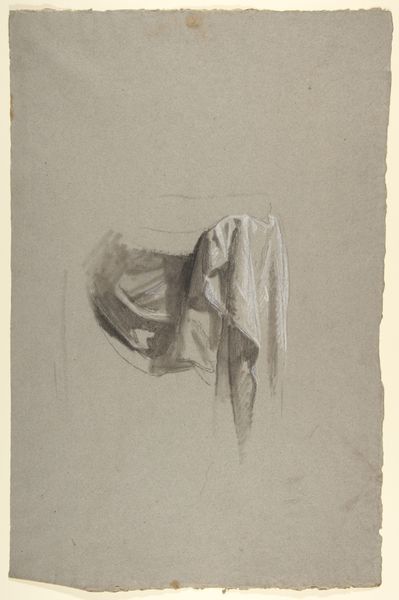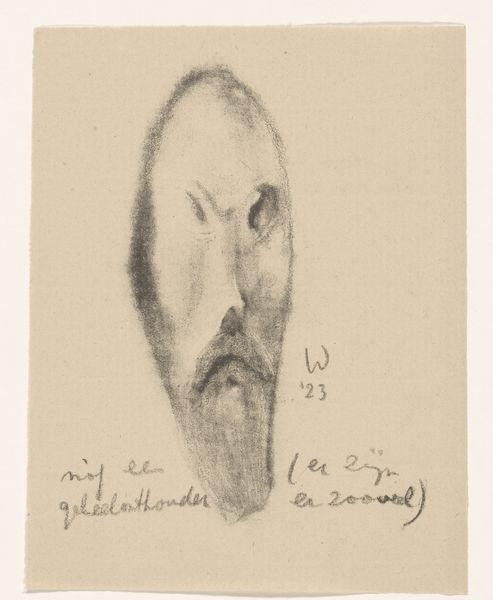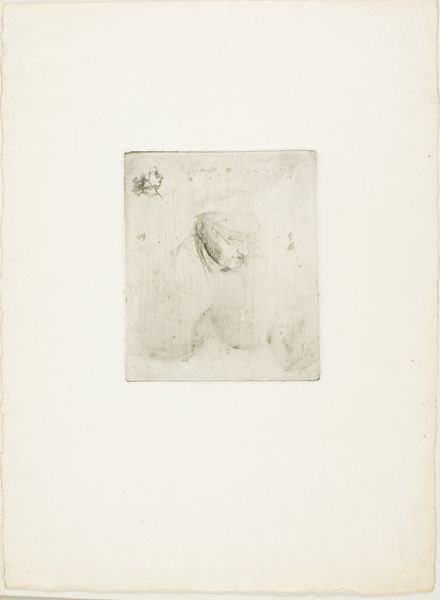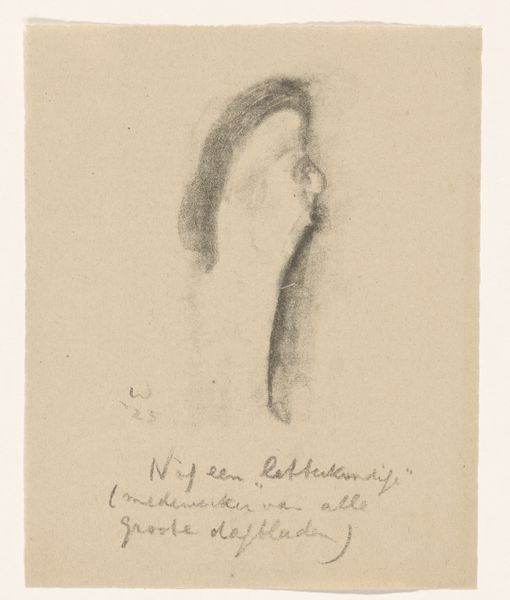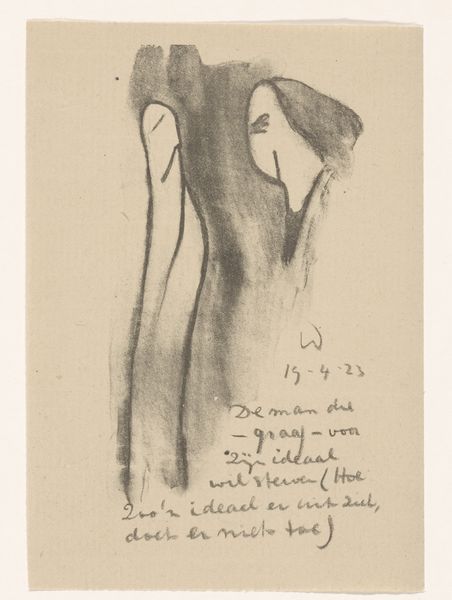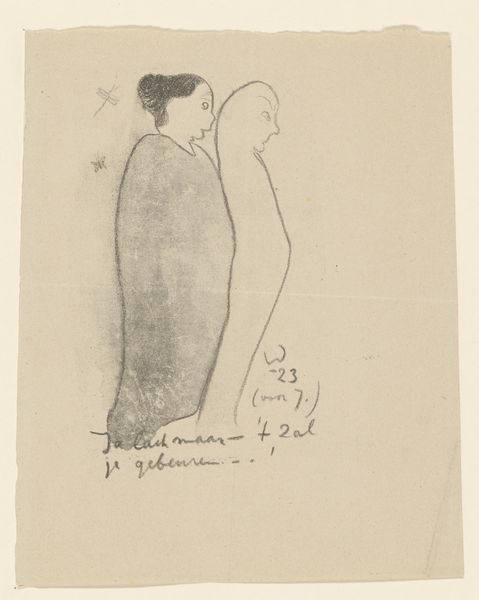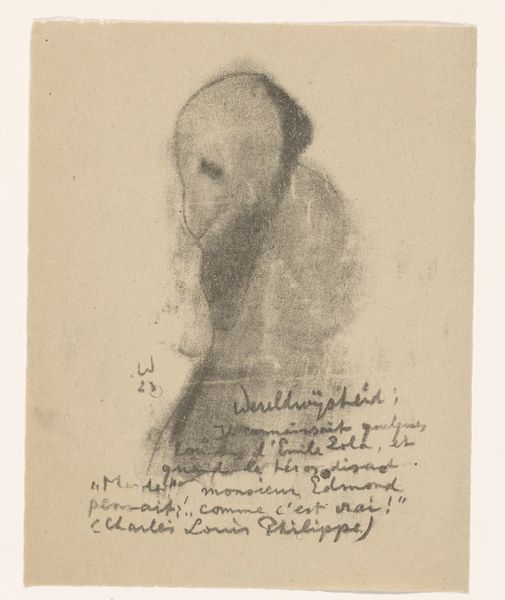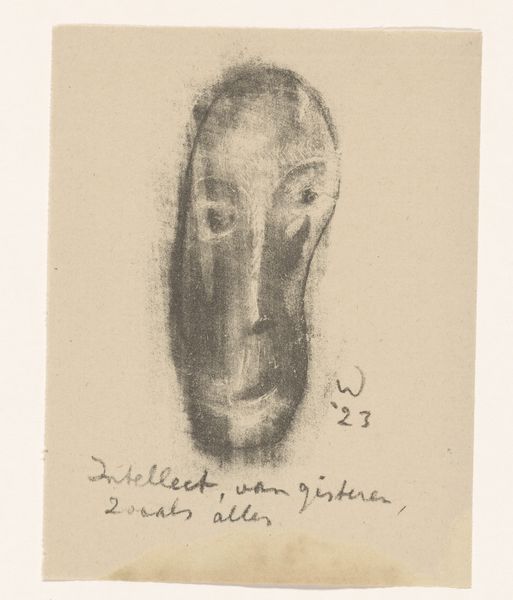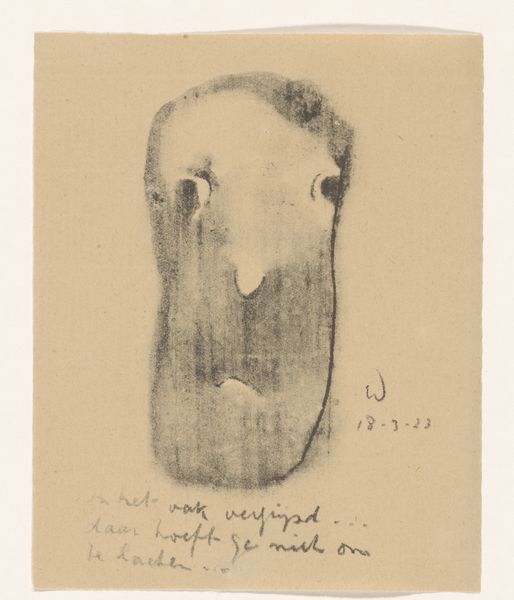
drawing, pencil
#
portrait
#
pencil drawn
#
drawing
#
pencil sketch
#
pencil drawing
#
pencil
#
expressionism
Dimensions: height 112 mm, width 96 mm
Copyright: Rijks Museum: Open Domain
Curator: Here we have Erich Wichmann's pencil drawing, "Levensernst," created in 1923, a piece that captures a poignant sense of… well, perhaps you can share your first impression? Editor: Austere. Almost spectral. The limited tonal range and soft focus create this haunting feeling, like a fading memory. What’s fascinating to me is how powerfully that feeling comes through despite its simple execution. Curator: Indeed. The image is striking, partly because of the almost minimalist rendering. The use of pencil elevates the ordinary to a plane where lines and shadows speak volumes. What strikes me is how the artist captured an emotional intensity in so few strokes, communicating depth and reflection. Notice, the tilt of the head and soft smudging about the eye give away deep thought. Editor: Agreed. The visible texture of the paper is also very evocative; it places the viewer within the historical moment. This was Weimar-era Germany. "Levensernst," or "Gravity of Life," resonates with a period marked by economic hardship and social upheaval. Wichmann subtly yet forcefully uses form to express his era. Curator: Certainly, we might ask about the gaze. Why did Wichmann focus on capturing an almost mournful aspect? Is there something he wished for the audience to understand regarding life's seriousness and, as you point out, this heavy moment in history? I find it becomes an exploration of identity and shared cultural burdens, of universal experiences embedded in the particulars of a specific place and time. Editor: To expand, Wichmann here explores that fraught space in a Europe shattered by war, engaging with how psychological interiority manifests during moments of collective trauma. There is a conscious layering of artistic meaning and social commentary. I keep seeing it as an urgent document of human feeling under pressure. Curator: Yes, pressure which leaves its indelible mark upon memory and visual representation. Editor: It becomes something more than just art. It turns into witness. It invites contemplation. Curator: In such a concentrated way. The work really stays with you.
Comments
No comments
Be the first to comment and join the conversation on the ultimate creative platform.

